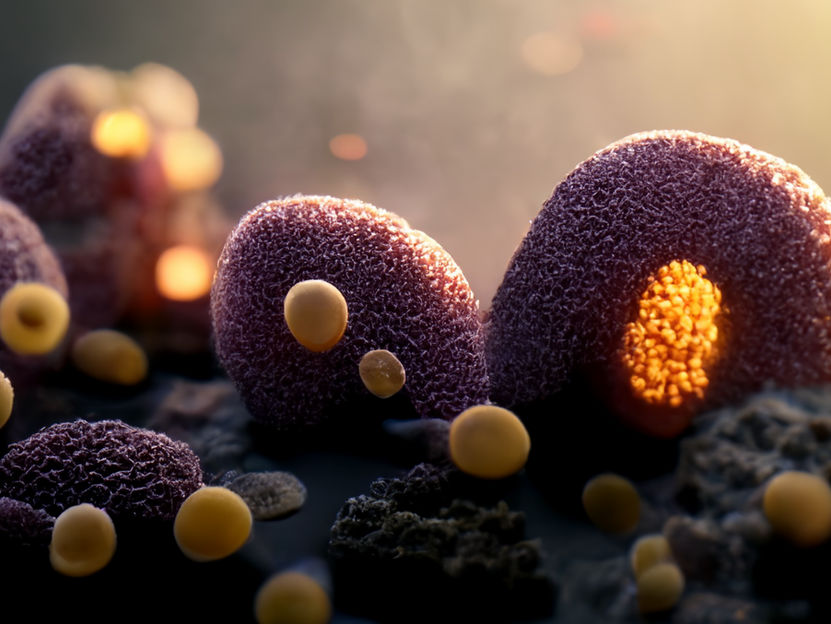Improved adaptation: bacteria can profit from the genetic material of other bacteria
Exchanging genetic information improves the adaptability of bacteria to changing environmental conditions
Advertisement
bacteria can exchange genetic material among themselves – even across species. Rather than being passed on from ancestor to offspring, genetic information is exchanged among organisms living at the same time. By systematically characterizing the fitness effects of this so-called horizontal gene transfer, researchers at the University of Cologne’s Institute of Biological Physics found that they can predict whether gene transfer accelerates adaptation to certain growth conditions. The group generated a series of hybrids of the bacterium Bacillus subtilis and related bacterial species by horizontal gene transfer. They then tested the bacteria for their adaptability to environmental factors such as temperature and food supply. They present their findings in the article ‘Distribution of fitness effects of cross-species transformation reveals potential for fast adaptive evolution’ in The ISME Journal.

Symbolic image
Computer generated picture
A single bacterial species has only a relatively small genome, and reproduces only by copying its own genetic information. Thus, its adaptability is limited. In community with other species, however, bacteria can acquire genetic material from their neighbours and incorporate it into their own genome.
But can bacteria actually improve their chances of survival with this new genetic material? Under what conditions does this provide an advantage? Professor Dr Berenike Maier and her team explored these questions, showing in an evolution experiment that bacteria benefit from other bacteria’s genetic material under certain growth conditions.
The researchers generated a large number of hybrids between the ‘hay bacillus’ Bacillus subtilis and related Bacillus species by means of horizontal gene transfer and determined their fitness. Fitness describes how fast a hybrid reproduces compared to the unmodified bacterium, called the parent strain. Rapid growth means that one bacterial species can displace another and thus achieve dominance of its own descendants. To test their adaptability, the researchers determined the fitness of the hybrids under different environmental conditions, such as elevated temperature or different food sources. ‘We obtained a different distribution of fitness effects for each condition. The important question now was whether we could predict from this if horizontal gene transfer would increase adaptability under a particular environmental condition,’ said Isabel Rathmann, one of the study’s lead authors.
To test these predictions, the scientists designed a high-throughput evolution experiment in collaboration with Professor Dr Tobias Bollenbach’s research group. The experiment generated populations of different hybrids that competed with each other for nutrients under different growth conditions. The use of a high-throughput system made it possible to observe hundreds of such populations over 450 bacterial generations. Initial results indicated that, using the distribution of fitness effects, predictions can be made about the fitness effects of gene transfer.
‘We found that under most growth conditions, there were some hybrids that were better adapted than the parent strain. This result suggests that a shared gene pool could help bacteria adapt to certain environmental conditions. However, there are also conditions under which gene transfer does not confer an advantage,’ said Mona Förster, another of the study’s lead authors. In the future, the researchers plan to use the method to specifically predict when horizontal gene transfer will accelerate bacterial adaptation.
The project is part of Collaborative Research Centre 1310 funded by the German Research Foundation (DFG), which focuses on the predictability of evolution. Within this research network, the researchers will continue to explore the possibility to make predictions about the costs and benefits of horizontal gene transfer in bacteria.

























































